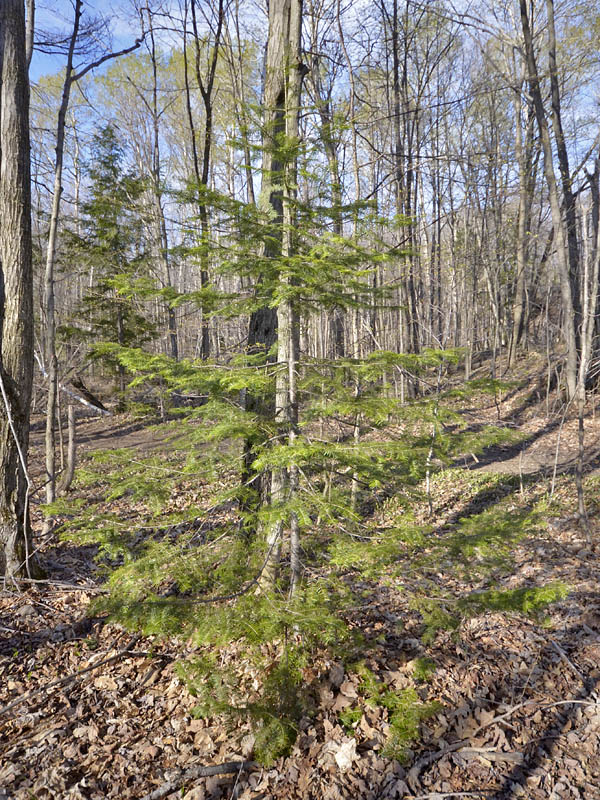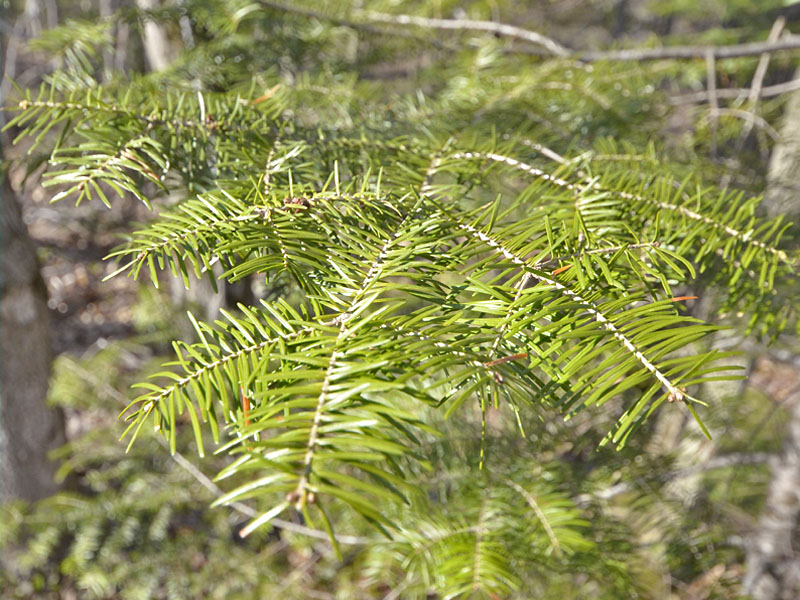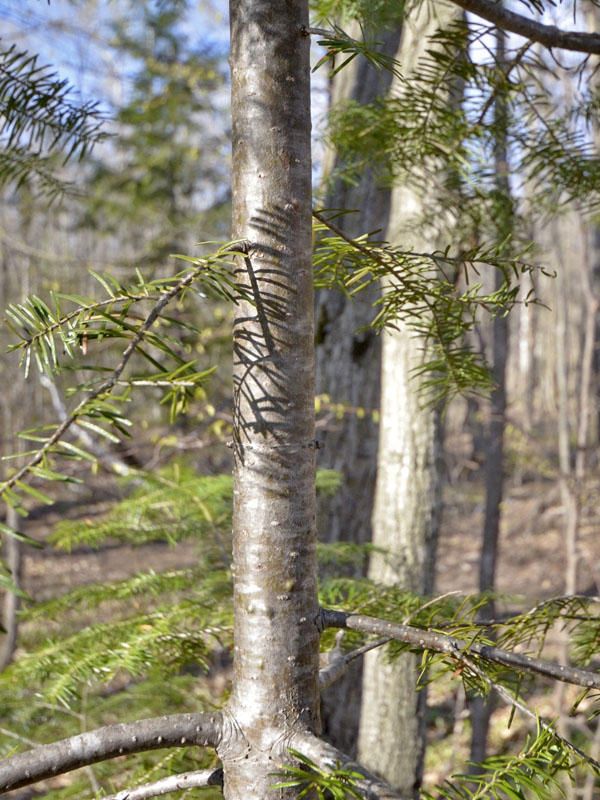| General Description | The widest range of any Abies in North America. Makes its best growth in cold climates. Valued for its spicy fragrance, neat shape and and bluish-green colour. |
| ID Characteristic | Leaves are horizontally arranged in 2 lateral sets with a V-shaped parting between. Upper surface is a shiny dark green with interrupted lines of stomata towards the tip. Typical balsam odour. |
| Shape | Narrow pyramidal shape with branches extending to the ground. |
| Landscape | Mainly used as a specimen tree and even a Christmas tree. Does not hold needles very long in hot dry conditions. |
| Propagation | A stratification period of 15-30 days in moist conditions at approximately 3°C is recommended. |
| Cultivation | Short lived in cultivation. |
| Pests | Favoured by spruce budworm, woolly adelgid and several canker diseases. |
| Habitat | Edges of forest and near damp locales such as lakes and swamps. |
| Bark/Stem Description | Smooth and pale grey with large resin blisters on young trees. On mature trees the bark becomes roughened and reddish-brown. |
| Flower/Leaf Bud Description | Small, brownish, resinous and seemingly varnished. |
| Leaf Description | The needles, arranged in two ranks are blunt, flat and short, 2 - 3.5 cm in length with a rounded apex, dark green above and whitish beneath. |
| Flower Description | Male, catkin-like. Develops from the underside of the leaf axil, yellow colour. |
| Fruit Description | Cones are 5-10 cm in length and may be purple to olive in colour. The scales are slightly elongated with sharp pointed bracts and are soft at maturity. |
| Colour Description | Dark green with white stomatic bands below. |
| Texture Description | Medium. |





